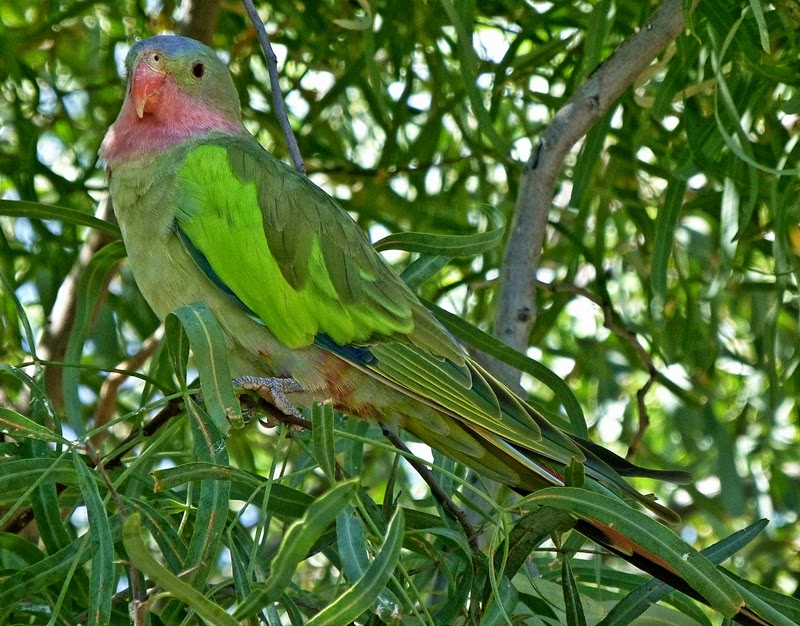Alice Springs March 6
The weather has broken and a cool spell has arrived. The high today was only 90, there is no
humidity, and it isn’t too uncomfortable!
We left the hotel at 7:45 to get to the Alice Springs Desert
Park before the worst of the heat. The
early morning was absolutely lovely with a temperature in the low 70’s and a
slight breeze. Skies are deep blue and
there are a few puffy clouds.
Ideal. The Desert Park is an
incredibly well done collection of flora and fauna from all over the interior
of Australia. Some of the animals are in
enclosures, some are attracted by the flora and stay here. There are a number of extremely large spaces
enclosed by wire nets to keep specimen birds in place, but they are so big you
don’t really feel like you’re enclosed.
The artificial bat cave allowed us to see these unusual mammals with
white undersides to their wings. Here
are a few of the things we saw:
Ghost Gum trees which are a kind of eucalypt, of which there
are many:
A Pied Stilt:
My favorite, a Thorny Devil:
And the Dingo—a close relative to a dog with which they can
interbreed:
The Service has more than 60 planes, all of which are
capable of providing almost ICU level care, and they service the far-flung
families who inhabit the Outback as well as the Aboriginal people who may need
care. They now provide some routine
services to these isolated people including immunizations, well-baby checks and
monitoring of chronic conditions. We
watched a well-done video about their history and current mission and had a
Q&A with a staff member. We were all
quite impressed.
We had a fascinating lecture/dinner in the evening. There is an operation here called “Kungkas
Can Cook” which is sort of a catering service specializing in Aboriginal bush
food traditions melded into European cooking.
The owner, an Aboriginal entrepreneur, gave us a short
lecture-demonstration on survival in the bush, and we then had a dinner with
many unusual flavors derived from roots, berries, leaves and meat from bush
animals and plants. Full and tired, we
are going promptly to bed as we get up at 5:30 AM for our trip to Ayers Rock
(Uluru).











No comments:
Post a Comment